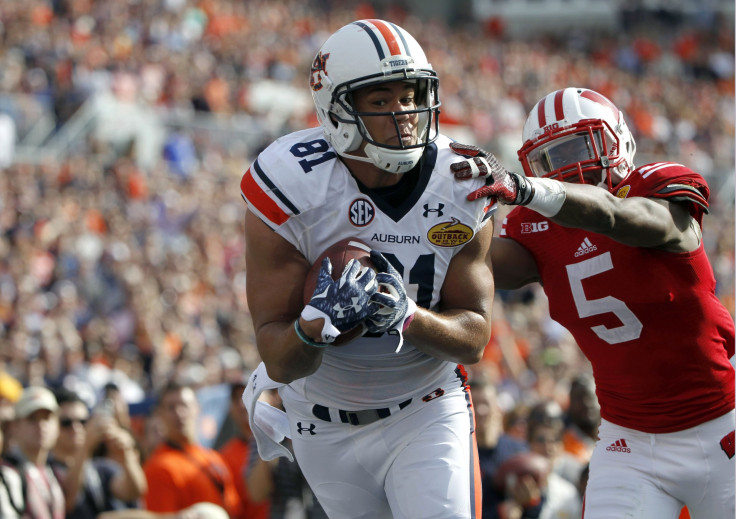NCAA Scholarship Changes: Student-Athletes Receiving $160 Million In New Benefits, Report Says

An expansion of athletic scholarship coverage in the NCAA’s five major conferences has increased student-athlete compensation by about $160 million, a USA Today Sports report said this week. The changes to the NCAA’s scholarship rules were seen as a response to litigation related to the divide between school revenues and athlete reimbursement.
The expanded compensation came about as a result of two new rules, the report noted. The NCAA’s Division 1 Board of Directors empowered its schools in April 2014 to pay for unlimited meals for all college athletes, regardless of whether they are under scholarship. Last January, representatives of the NCAA’s “Power Five” Conferences – the ACC, Big Ten, Big 12, Pac-12 and SEC – authorized their universities to extend athletic scholarships to include “incidentals,” such as day-to-day expenses. The changes were officially implemented on Aug. 1.
“I do think it’d be naïve to say that the lawsuits didn’t accelerate things, but there was a lot of discussion about needing to do this before some of the lawsuits came about,” Kirk Schulz, chairman of the NCAA’s Board of Governors and Kansas State University president, told USA Today. Universities “were saying, ‘Look, we can afford to do it. We just need the ability to do it.’”
USA Today Sports conducted its analysis with data obtained from more than 100 universities that play in the NCAA’s Division I Football Bowl Subdivision. Auburn University of the Southeastern Conference led all schools with $2.1 million in additional spending on student-athlete scholarships, according to the research.
NCAA Division I athletes are getting more than $160 million in new benefits: http://t.co/N8ypVTG3qP pic.twitter.com/nffcfslB17
— USA TODAY Sports (@USATODAYsports) August 18, 2015The NCAA has faced several lawsuits in recent months amid growing criticism of a system critics say exploits student-athletes. Big-time college sports programs earn millions through lucrative television rights contracts and sponsorships deals and then use that money to build state-of-the-art facilities and hire prominent coaches. Officials treat athletes as students, not employees, and assert that any change to that status would upend the student-athlete model in college sports. The NCAA earned $871.6 million in 2011-2012, Reuters reported.
Efforts to correct this disparity have met with mixed results. Earlier this week, the National Labor Relations Board opted not to rule on a petition by Northwestern University football players who sought to be classified as school employees rather than student-athletes. The NLRB dismissed the petition amid concerns about how a ruling would affect “competitive balance” in college sports.
In theory, the right to unionize would allow Northwestern’s football program to offer recruits perks, such as salaries and practice standards that other schools would not be able to match. The dismissal, which overturned a previous ruling by the NLRB, was considered a sore blow to efforts by college athletes to secure fair compensation.
The NCAA’s dispute with student advocates also gave rise to a pair of antitrust lawsuits, one of which resulted in victory for college athletes. In August 2014, U.S. District Court Judge Claudia Wilken ruled the NCAA could not bar Division I football or basketball players from being compensated for use of their likenesses in media. Wilken imposed an injunction, ordering officials to allow universities to establish trust funds of up to $5,000 for student-athletes. An appellate court granted the NCAA’s request for a stay on Wiken’s injunction last July, and her ruling remains under appeal, the New York Times reported.
Sports attorney Jeffrey Kessler is representing a group of college football and basketball players in a separate antitrust lawsuit against the NCAA. The suit seeks a court order that would force the NCAA to provide student-athletes with a slice of its profits. The NCAA has so far declined to comment on the case, Reuters reported.
© Copyright IBTimes 2024. All rights reserved.






















